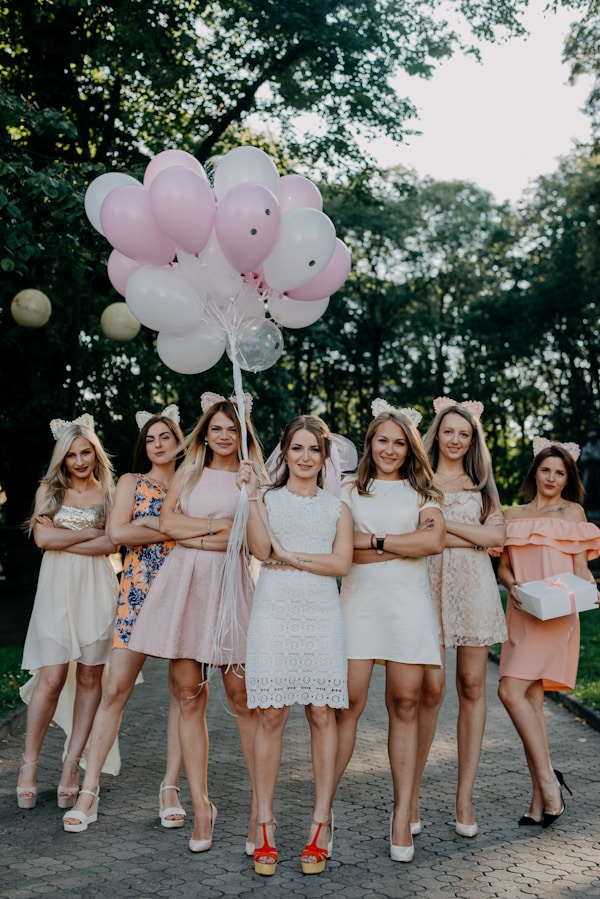How to Create a Stunning Wedding Dress with a Cascading Train
Introduction to Cascading Trains in Wedding Dresses
The wedding dress is often considered the centerpiece of a wedding celebration, embodying elegance and personal style. Among the various designs, a cascading train stands out for its dramatic and romantic appeal. But how do you create a wedding dress with a cascading train? In this article, we will explore the essential steps, materials, and techniques necessary to craft this iconic gown. Additionally, we'll discuss common questions related to wedding dress designs, inspiring you to create a masterpiece that complements your unique bridal vision.
Understanding the Cascading Train
A cascading train refers to a long, flowing extension at the back of a wedding dress that gracefully trails behind the bride. This feature not only adds elegance but also enhances the overall silhouette of the gown. The train can range from a few inches to several feet long, offering brides a variety of options to choose from. Knowing how to design a cascading train involves understanding the different styles, fabric choices, and construction techniques.
Types of Cascading Trains
| Type of Train | Description | Best Suited For |
| Christian Train | A short train that barely sweeps the ground. | Informal weddings |
| Chapel Train | Extends about 3 to 4 feet from the waist. | Traditional church weddings |
| Cathedral Train | Approximately 6 to 8 feet long, creating a dramatic effect. | Formal ceremonies |
Choosing the Right Fabric
When creating a cascading train, the fabric you choose is crucial. Different materials lend varying amounts of weight and drape, impacting how the train flows. Here are some popular fabric options:
- Chiffon: Lightweight and airy, it creates a soft, ethereal look.
- Tulle: A stiffer netting that can hold its shape while adding volume.
- Satin: Offers a luxurious shine and smooth draping quality.
- Organza: A lightweight, crisp fabric that enhances structure.
Construction Techniques for the Cascading Train
Creating a wedding dress with a cascading train involves several construction techniques. Here’s a step-by-step guide:
Step 1: Designing the Gown
Start by sketching out your wedding dress design. Consider the overall silhouette, neckline, and sleeve styles. Visualizing the cascading train in relation to the rest of the gown will help you make informed choices during the construction process.
Step 2: Choosing a Pattern
Select a dress pattern that includes the option for a train or modify an existing design. Patterns provide a reference for cutting the fabric and assembling the pieces accurately.
Step 3: Cutting the Fabric
Carefully cut your fabric according to the pattern, ensuring to leave extra material for the train if it’s not included in the original pattern. The extra fabric will allow you to create the cascading effect.
Step 4: Assembling the Dress
Begin assembling the main body of the dress by sewing the bodice and skirt sections together. Ensure the waistline fits comfortably. At this stage, the train can be attached to the back of the skirt.
Step 5: Creating the Train
The cascading train can be created by cutting a larger piece of the chosen fabric and attaching it to the back of the skirt. For a dramatic effect, ensure that the train is gathered or pleated appropriately.
Step 6: Finishing Touches
Add any embellishments such as lace, beads, or embroidery that complement the overall design. Finally, hem the train to ensure it flows evenly and looks polished.

Frequently Asked Questions about Cascading Trains
What's the difference between a train and a bustle?
A train is the long piece of fabric that trails behind the dress, while a bustle is a way to lift and secure the train for dancing or moving around at the reception without dragging on the floor.
How do I care for a wedding dress with a cascading train?
Always consult a professional for cleaning and preservation. Avoid hanging the dress by the train to prevent stretching and damage.
Can I add a train to an existing wedding dress?
Yes, with some sewing skills, you can add a cascading train to an existing gown. Consider consulting a professional tailor if you’re unsure about making modifications.
Conclusion: Crafting the Perfect Cascading Train
Creating a wedding dress with a cascading train is a labor of love that requires attention to detail, the right materials, and construction techniques. Whether for a traditional church ceremony or an informal beach wedding, a cascading train can elevate your bridal look to unforgettable heights. Remember to choose fabrics that best suit your style and personality, and don't hesitate to explore various train lengths that best fit your wedding theme. Happy sewing, and may your wedding dress be as radiant as you are on your special day!